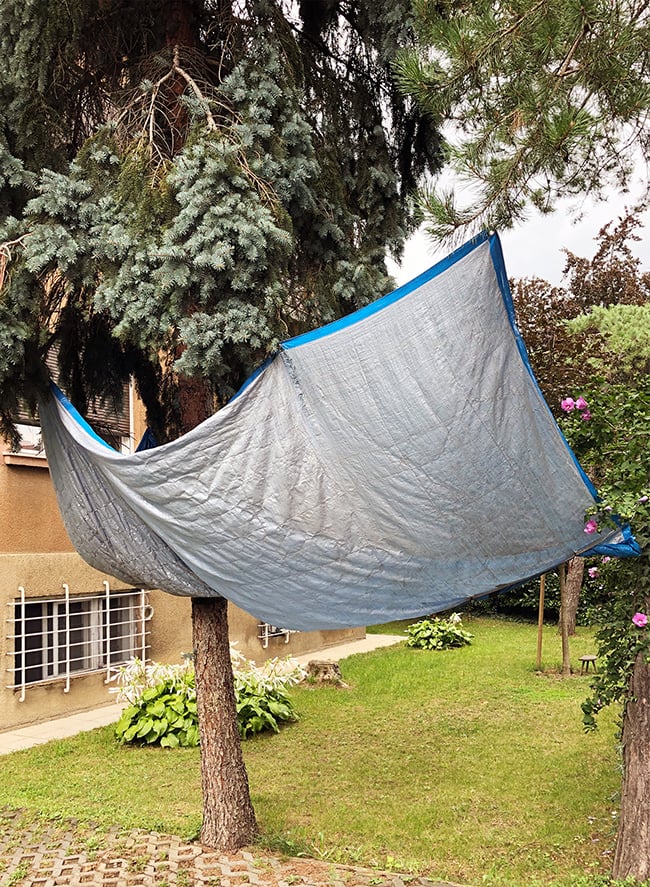Hana Miletić – Soft Ties

prima personale in Italia dell’artista croata Hana Miletić (Zagabria 1982), intitolata Soft Ties.
Comunicato stampa
Starting from a background in documentary photography, and inspired by the long tradition of handwork in her family, Hana Miletić (Zagreb, 1982) has developed an artistic language based mainly on the creation of woven textile works.
Miletić uses the weaving process to reflect on the social and cultural realities in which the artist herself works. Weaving, which requires practice, time, care, and attention, allows the artist to formulate new relationships between work, thought, and the emotional sphere, as well as to counteract certain economic and social conditions at work, such as acceleration, standardization, and transparency. Through her use of weaving, Miletić reproduces public gestures of care and repair, while consciously dealing with the encountered states of objects transition.
Soft Ties at CURA. HQ/BASEMENT ROMA is the first solo exhibition of Hana Miletić in Italy and it consists of new hand-woven textile works from the artist’s ongoing Materials series (2015–), which is based on repairs of infrastructure, vehicles, and architectural elements (such as mirrors, headlights, and windows) that the artist photographs in public space and then reproduces with fiber and yarn on the loom. By modeling the woven textiles on repairs that trace both marks of transformation and gestures of care, Miletić grapples in dedicated ways with the consequences of political and economic changes. An example of such is the site-specific and multi-piece architectural repair that Miletić transfers from Belgrade to Rome as a material echo of The Dreamers exhibition.
“Miletić’s work”–argues Chus Martínez in her recent essay on the artist’s practice (CURA.37)–“constitutes a personal take on the need to invent a proper medium able to provide an account of the social changes that swept millions of people into the capitalist world and the impact of its rapid transformations. Her work expresses something very humble that contradicts the hubris of modernity: before of thinking to replace the old worlds with the magical appearance of new ones we may need to stop and repair, and confront what is already there. Cutting across textures and materials, understanding the physical as a premise of the social spaces we inhabit, she reveals solidarities between the different layers that constitute our experience of the real, but also between art and the ordinary, art and the people.”
For Soft Ties, Miletić more specifically focuses on the temporary materials that repair and support plants. In the subterranean spaces of CURA. HQ / Basement Roma, which Miletić treats as an incubator of sort, she reproduces binds, braces, grafts, and ties, made with tarpaulins, pieces of nylon, plant tape, and regular tape that fix injured plants and encourage their healing process. Next to the reinforcement and replication of plant repairs, in order to further nurture the wellbeing of plant life, the gallery space is filled with blue light-blue being the most important light for plant growth because it gets readily absorbed by chlorophyll and converts into energy through photosynthesis. Unique to the world of plants, due to its capacity to recreate the atmosphere, photosynthesis can be understood as the most radical expression of being in the world. Although the plants themselves are missing, by venerating the humble materials used for their care-taking, Miletić wants to tighten the ties between the living and the world.



